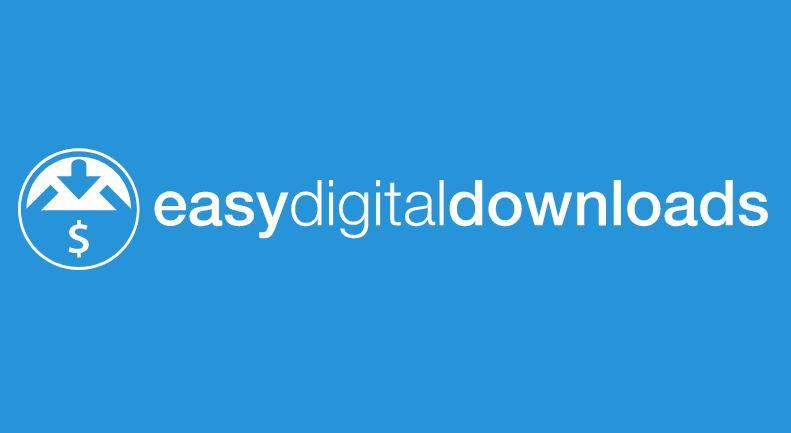Unlock your entrepreneurial potential by exploring diverse eCommerce business models! From B2C to subscription services, each model offers unique opportunities to connect with customers and drive growth. Discover the perfect fit for your vision today!
What Is an eCommerce Business Model? (8+ Common Types)
In today’s digital age, the world of commerce has undergone a remarkable transformation, breaking free from the confines of traditional brick-and-mortar stores. Welcome to the realm of eCommerce, where opportunities are boundless, and innovation reigns supreme. As entrepreneurs and aspiring business owners seek to carve their niche in this dynamic landscape, understanding the various eCommerce business models becomes not just an advantage, but a necessity. Whether you dream of launching your own online store, leveraging social media to sell your creations, or curating a subscription box that delights customers month after month, the possibilities are endless. In this article, we will explore over eight common eCommerce business models, each offering unique pathways to success. By grasping the essence of these models, you’ll be empowered to make informed decisions, adapt to market trends, and ultimately turn your entrepreneurial visions into a thriving reality. Join us on this journey and unlock the keys to building a successful eCommerce venture!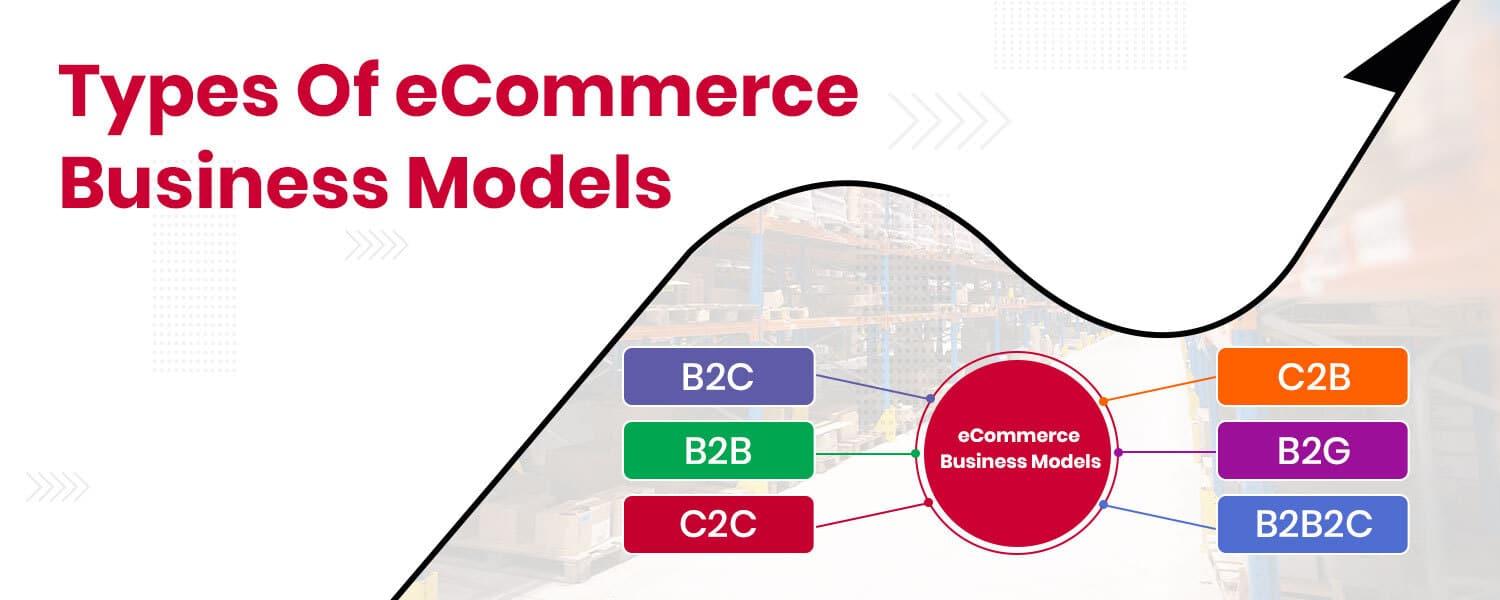
What Defines an eCommerce Business Model and Why It Matters
Understanding the essence of an eCommerce business model is crucial for both budding entrepreneurs and established businesses looking to optimize their online presence. An eCommerce business model encapsulates the structure and strategy that a company employs to generate revenue through digital sales. This model not only dictates how products or services are delivered but also plays a pivotal role in shaping the customer experience, marketing strategies, and overall operational efficiency.
At its core, an eCommerce business model is defined by several key components:
- Value Proposition: What unique value does the business offer to its customers? This could range from pricing and quality to convenience and customer service.
- Target Audience: Who are the ideal customers? Identifying the demographic and psychographic traits of the target market is essential for tailoring marketing efforts.
- Revenue Streams: How does the business make money? This could involve direct sales, subscription fees, affiliate marketing, or advertising revenue.
- Distribution Channels: Through which platforms are products or services sold? This may include a company website, third-party marketplaces, or social media channels.
The significance of an eCommerce business model extends beyond mere sales; it influences every aspect of the business. A well-defined model allows for:
- Streamlined Operations: Clarity in structure helps in optimizing processes, reducing costs, and improving productivity.
- Enhanced Customer Engagement: With a clear understanding of the audience, businesses can create personalized experiences that resonate with customers.
- Strategic Decision Making: Data-driven insights derived from a solid business model empower companies to make informed choices, adapting to market changes swiftly.
To illustrate various eCommerce business models, consider the following table showcasing common types and their defining characteristics:
| Business Model Type | Characteristics |
|---|---|
| Business-to-Consumer (B2C) | Direct sales from businesses to individual consumers. |
| Business-to-Business (B2B) | Transactions between businesses, often in bulk. |
| Consumer-to-Consumer (C2C) | Individuals selling to one another, typically via online marketplaces. |
| Subscription Model | Recurring payments for access to a product or service. |
| Dropshipping | Retail model where businesses sell products without holding inventory. |
Ultimately, the choice of an eCommerce business model can make or break a company’s digital strategy. By understanding the different models and their implications, businesses can better position themselves for success in a competitive online marketplace. This knowledge equips entrepreneurs to innovate, adapt, and grow, transforming the way they engage with customers and generate revenue.
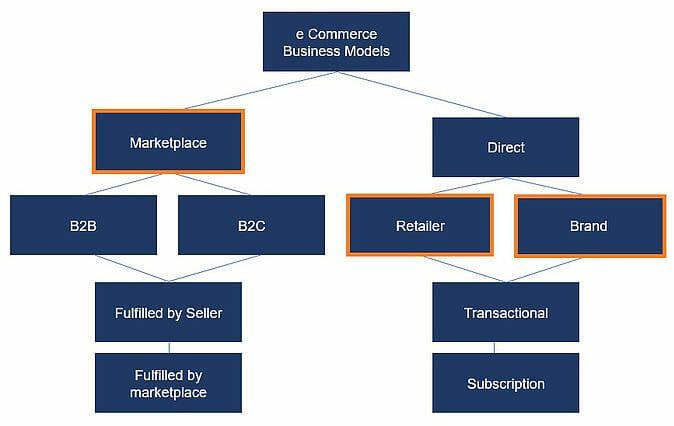
Exploring the Core Components of Successful eCommerce Models
The landscape of eCommerce is constantly evolving, driven by technology, consumer behavior, and market dynamics. At the heart of every successful eCommerce venture lies a robust business model that not only outlines the framework for operations but also lays the foundation for growth and sustainability. Understanding these core components is essential for anyone looking to navigate the digital marketplace effectively.
Value Proposition is the cornerstone of any eCommerce model. It defines what makes a business unique and why consumers should choose it over competitors. A compelling value proposition addresses customer pain points and highlights the benefits of the products or services offered. This clarity in communication fosters trust and establishes a connection with potential buyers.
Another vital component is Revenue Generation Strategies. Successful eCommerce businesses employ diverse approaches to generate income, such as:
- Direct Sales: Selling products directly to consumers.
- Subscription Models: Offering products or services on a recurring basis.
- Affiliate Marketing: Earning commissions by promoting other businesses’ products.
Choosing the right combination of these strategies can significantly impact profitability and sustainability.
Customer Experience plays an integral role in shaping perceptions and driving repeat business. From user-friendly website navigation to seamless checkout processes, every touchpoint in the customer journey must be optimized. Providing excellent customer service, including prompt responses and hassle-free returns, reinforces loyalty and encourages positive word-of-mouth marketing.
Furthermore, effective Supply Chain Management is essential for maintaining operational efficiency. This involves everything from sourcing products to managing inventory and fulfilling orders. Streamlining the supply chain reduces costs and ensures that customers receive their orders on time, enhancing overall satisfaction and trust in the brand.
Lastly, data analytics is a game changer in the eCommerce realm. By leveraging customer insights, businesses can tailor their marketing strategies, improve product offerings, and enhance user experiences. Analyzing metrics such as conversion rates and customer behavior allows for informed decision-making and agile adaptations to market trends.
| Component | Importance |
|---|---|
| Value Proposition | Defines uniqueness and attracts customers |
| Revenue Strategies | Diverse income streams enhance profitability |
| Customer Experience | Drives repeat business and builds loyalty |
| Supply Chain Management | Ensures efficiency and timely delivery |
| Data Analytics | Facilitates informed decision-making |
Unlocking the Potential of B2C eCommerce: Connecting with Consumers
In the rapidly evolving landscape of B2C eCommerce, businesses are presented with unprecedented opportunities to connect with consumers on a personal level. By harnessing the power of technology and innovative strategies, brands can create meaningful interactions that resonate deeply with their audience. This connection not only fosters loyalty but also drives sales, making it essential for any eCommerce business model.
To truly unlock the potential of B2C eCommerce, companies must focus on understanding their consumers’ needs and preferences. Personalization is key; leveraging data analytics allows businesses to tailor their offerings, ensuring that each consumer feels valued and understood. This could involve:
- Customized product recommendations
- Targeted marketing campaigns
- Dynamic pricing strategies
Moreover, the integration of social commerce has become a game changer in the B2C space. By utilizing platforms where consumers already engage, brands can seamlessly incorporate shopping into social interactions. This not only enhances visibility but also paves the way for authentic consumer relationships. As consumers increasingly seek genuine connections with brands, leveraging user-generated content and reviews can significantly enhance trust and credibility.
Another essential aspect is to offer exceptional customer service. With the rise of eCommerce, consumers expect quick responses and support across multiple channels. Businesses that invest in superior customer service often see higher conversion rates and customer retention. Effective strategies might include:
- Live chat support
- Comprehensive FAQs
- Proactive outreach for feedback
The role of technology cannot be overlooked. Embracing innovations such as augmented reality (AR) and artificial intelligence (AI) can create immersive shopping experiences. For instance, AR enables consumers to visualize products in their own environment, while AI can streamline the shopping process, providing tailored shopping experiences that enhance satisfaction and drive conversions.
fostering a sense of community around a brand can significantly impact consumer loyalty. Creating spaces for customers to interact, share experiences, and contribute ideas can nurture a vibrant brand culture. As consumers increasingly seek authentic connections, engaging them through community-driven initiatives can transform passive buyers into passionate advocates.
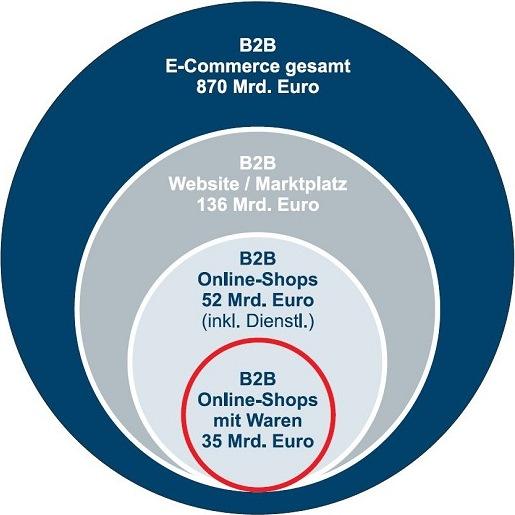
Harnessing the Power of B2B eCommerce for Business Growth
In today’s rapidly evolving digital landscape, B2B eCommerce has emerged as a cornerstone for businesses looking to expand their reach and boost profitability. Companies are no longer confined to traditional sales tactics; instead, they are embracing innovative eCommerce models to streamline operations and enhance customer experiences. By leveraging the capabilities of online platforms, businesses can unlock new revenue streams and foster long-term partnerships.
One of the greatest advantages of B2B eCommerce is its ability to provide a seamless buying experience. Customers expect a user-friendly interface, fast transactions, and personalized service. Here are some key elements that can help businesses optimize their eCommerce platforms:
- Intuitive Design: Ensure the website is easy to navigate, making it simple for clients to find products and services.
- Mobile Optimization: With an increasing number of users shopping on mobile devices, a responsive design is essential.
- Secure Payment Options: Offering multiple, secure payment methods builds trust and encourages transactions.
- Customer Support: Providing robust support through chatbots, FAQs, and live assistance can significantly enhance customer satisfaction.
Additionally, integrating data analytics into B2B eCommerce can transform how businesses interact with their customers. By analyzing purchasing behavior and preferences, companies can tailor their offerings to meet the specific needs of their clientele. This data-driven approach not only boosts conversion rates but also strengthens customer loyalty.
Collaboration is another vital aspect of B2B eCommerce that drives growth. Companies can connect with suppliers, distributors, and partners to create a more cohesive supply chain. This opens doors to:
- Bulk Order Discounts: Encourage larger purchases by offering tiered pricing models.
- Joint Marketing Ventures: Partner with other businesses to co-promote products and expand reach.
- Shared Resources: Utilize shared technology and infrastructure to reduce costs and improve efficiency.
To illustrate the potential of various eCommerce models, consider the following comparison of common B2B business types:
| Business Model | Description |
|---|---|
| Wholesale | Selling products in bulk to retailers, who then sell them to consumers. |
| Manufacturer | Directly selling products to businesses, often cutting out the middleman. |
| Marketplace | A platform where multiple vendors sell their products to businesses. |
| Subscription | Regularly supplying products or services for a recurring fee. |
By adopting these innovative B2B eCommerce strategies, businesses can not only enhance their operational efficiency but also pave the way for sustainable growth. As competition intensifies, those who harness the power of digital commerce will undoubtedly position themselves as leaders in the marketplace.
The Rise of C2C Platforms: Empowering Individual Sellers
The advent of C2C (Consumer-to-Consumer) platforms has transformed the landscape of eCommerce, offering a unique space where individual sellers can thrive. These platforms empower everyday people to turn their passions and unused items into profitable enterprises. By eliminating the traditional barriers to entry that often come with starting a business, C2C marketplaces have democratized the selling process.
At the heart of this revolution is the ability for sellers to directly connect with buyers without the need for intermediaries. This direct interaction fosters a sense of community and trust, as buyers can engage with sellers, asking questions and learning more about the products. The intimacy of personal stories behind each item often enhances the purchasing experience, leading to satisfied customers who appreciate the authenticity and uniqueness of their purchases.
Here are several reasons why C2C platforms are thriving:
- Low Startup Costs: Individuals can start selling without significant financial investment, making it accessible for anyone.
- Global Reach: Sellers can market their products to a worldwide audience, expanding their potential customer base beyond local markets.
- Flexibility and Control: Sellers have the freedom to set their prices, manage their inventory, and dictate their selling terms.
- Community Engagement: Many platforms emphasize social interaction, allowing sellers to build relationships and establish loyal customer bases.
One of the most notable platforms leading this charge is eBay, which has allowed millions of users to buy and sell a vast array of products. Similarly, platforms like Facebook Marketplace and Poshmark enable users to leverage their social connections to enhance sales. The success of these platforms highlights the potential of individuals to carve out niches and create businesses that reflect their personal interests and values.
To further illustrate the impact of C2C platforms, consider the following table showcasing key features of popular C2C platforms:
| Platform | Key Feature | Target Audience |
|---|---|---|
| eBay | Auction-style listings | General consumers and collectors |
| Poshmark | Social sharing for fashion | Fashion enthusiasts |
| Facebook Marketplace | Community-driven sales | Local buyers and sellers |
| Etsy | Handmade and vintage items | Artisans and crafters |
As technology continues to evolve, the possibilities for individual sellers are expanding. From niche products to handmade goods, the range of offerings on C2C platforms is limited only by creativity and ambition. This shift is not just a trend; it’s a movement towards empowering individuals to take control of their economic futures. With the right tools and community support, anyone can become a successful seller, paving the way for a more inclusive and diverse eCommerce landscape.
Delving Into Subscription-Based Models: Recurring Revenue Redefined
In the ever-evolving landscape of eCommerce, subscription-based models have emerged as a powerful tool for businesses seeking sustainable growth. These models not only provide a steady stream of income but also foster deeper connections with customers. By offering recurring value, businesses can transform casual buyers into loyal subscribers, paving the way for long-term success.
What makes subscription-based models so appealing? Here are a few compelling reasons as to why businesses are turning toward this model:
- Predictable Revenue: Subscription models allow businesses to forecast income more accurately, reducing uncertainty and aiding in effective financial planning.
- Customer Loyalty: Regular engagement creates stronger relationships. Subscribers are more likely to stick around, as they feel invested in your brand.
- Upselling Opportunities: With a captive audience, businesses can introduce new products or premium tiers seamlessly, enhancing lifetime customer value.
- Market Insights: Continuous interaction with subscribers offers valuable data that can inform product development and customer service enhancement.
Consider the diversity of subscription offerings available in today’s market. From streaming services like Netflix to curated monthly boxes such as Birchbox, the possibilities are endless. Each model can cater to different niches and audiences, exemplifying the versatility of subscriptions.
| Type of Subscription | Description | Target Audience |
|---|---|---|
| Product Subscription | Monthly delivery of physical goods. | Consumers seeking convenience. |
| Service Subscription | Access to exclusive services or content. | Professionals and enthusiasts. |
| Membership Subscription | Community access with member benefits. | Brands looking to build a community. |
Implementing a subscription model is not just about recurring payments; it’s about redefining how you engage with customers. Companies that have successfully adopted this model prioritize providing ongoing value. Whether through exclusive content, members-only discounts, or personalized experiences, the focus should always remain on enhancing the customer journey.
As eCommerce shifts towards a subscription-based future, businesses must remain adaptable and innovative. Understanding the needs of your audience and continuously evolving your offerings will set you apart in a crowded market. Embrace this transformative approach and unlock the potential of recurring revenue for your business.
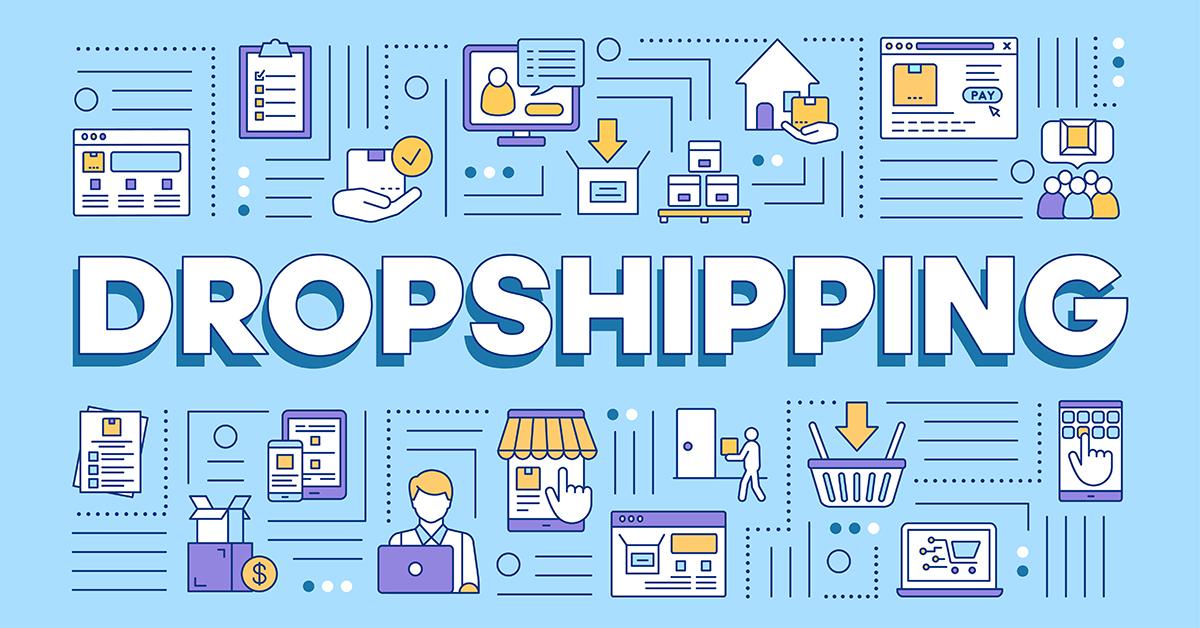
The Impact of Dropshipping: Low-Risk Entry into eCommerce
Diving into the world of eCommerce can be an exciting yet daunting endeavor, especially for aspiring entrepreneurs. One of the most attractive models in this space is dropshipping, which offers a low-risk entry point without the burdens of inventory management or upfront product costs.
With dropshipping, business owners can focus on what truly matters: scaling their brand and reaching their audience. This model allows you to:
- Minimize Financial Risk: Since you only purchase products after making a sale, your financial risk is significantly lower compared to traditional retail.
- Explore Multiple Niches: The flexibility of dropshipping means you can test various products without the commitment of wholesale orders.
- Improve Cash Flow: As you don’t hold inventory, your overhead costs are reduced, leading to a healthier cash flow.
- Adapt Quickly: The dropshipping model allows you to pivot your offerings based on market trends and customer preferences swiftly.
Moreover, dropshipping encourages innovation in marketing strategies. By leveraging digital platforms, you can create compelling campaigns that resonate with your target audience. Many successful dropshippers have harnessed the power of social media marketing and influencer partnerships to build brand awareness and drive sales.
As you embark on your dropshipping journey, it’s essential to select reliable suppliers. The right partners are crucial for ensuring product quality and timely fulfillment. Consider creating a table to track potential suppliers’ key metrics:
| Supplier Name | Product Range | Shipping Speed | Ratings |
|---|---|---|---|
| Supplier A | Electronics, Fashion | 3-5 days | 4.5/5 |
| Supplier B | Home Goods | 2-4 days | 4.7/5 |
| Supplier C | Health & Beauty | 5-7 days | 4.2/5 |
dropshipping not only lowers barriers to entry in the eCommerce landscape but also empowers entrepreneurs to unleash their creativity and resilience. By leveraging the right tools, strategies, and partnerships, you can turn your dropshipping venture into a thriving business. It’s time to take that first step and explore the limitless possibilities that await you!

Navigating the World of Digital Marketplaces: Opportunities and Challenges
In today’s fast-paced digital landscape, eCommerce businesses are at the forefront of transforming how we shop, sell, and connect. Each business model brings its own set of opportunities and challenges, making it essential for entrepreneurs to understand the dynamics of their chosen path. From leveraging global reach to grappling with fierce competition, the journey of navigating eCommerce is both exhilarating and complex.
Consider the Business-to-Consumer (B2C) model, where businesses sell directly to consumers. This model thrives on the ability to create unique customer experiences and strong brand loyalty. Companies like Amazon have mastered this approach, providing a seamless shopping experience. However, the challenge lies in standing out amidst a crowded market and maintaining customer retention in an era of endless choices.
On the other hand, the Business-to-Business (B2B) model focuses on transactions between businesses. This space is ripe with opportunities for companies that can offer tailored solutions to meet the specific needs of their clients. Yet, B2B companies must navigate longer sales cycles and the necessity of building trust in business relationships. Establishing credibility is paramount, as word-of-mouth and referrals often drive B2B success.
Consumers increasingly crave personalization, which brings us to the power of the Consumer-to-Consumer (C2C) model. Platforms like eBay and Etsy enable consumers to sell directly to each other, fostering a sense of community and creativity. However, challenges such as ensuring quality control and fostering trust among users can impact these marketplaces. Sellers must differentiate themselves to succeed in a landscape where anyone can be a competitor.
The rise of subscription-based models is also reshaping the eCommerce world. Companies like Netflix and Dollar Shave Club have tapped into recurring revenue streams, offering convenience that consumers increasingly value. Yet, with the growing number of subscription services, businesses face the challenge of retaining subscribers and continuously delivering value to keep them engaged.
To illustrate the diversity of eCommerce business models, consider the following table:
| Business Model | Key Benefits | Challenges |
|---|---|---|
| B2C | Direct consumer engagement, brand loyalty | High competition, customer retention |
| B2B | Long-term relationships, tailored solutions | Long sales cycles, trust-building |
| C2C | Community-driven, creativity | Quality control, trust issues |
| Subscription | Recurring revenue, convenience | Subscriber retention, continuous value delivery |
As you dive into the world of eCommerce, understanding these models will empower your strategy and decision-making. Embrace the opportunities each presents, and be prepared to tackle the unique challenges that come your way. In an ever-evolving digital marketplace, adaptability and innovation are your strongest allies.

Integrating Social Commerce into Your Strategy for Increased Engagement
As businesses navigate the evolving landscape of online retail, integrating social commerce has emerged as a powerful strategy to boost engagement and drive sales. This innovative approach combines the social aspects of online platforms with the transactional nature of eCommerce, allowing brands to connect with their audience on a deeper level.
To successfully incorporate social commerce into your strategy, consider the following key elements:
- Leverage User-Generated Content: Encourage customers to share their experiences with your products on social media. This not only creates authentic content but also builds trust and credibility within your community.
- Utilize Social Platforms for Shopping: Take advantage of integrated shopping features on platforms like Instagram and Facebook. By enabling direct purchases through these channels, you can streamline the buying process and reduce friction for customers.
- Engage with Influencers: Collaborating with influencers who resonate with your target audience can amplify your brand’s reach. Their endorsements can lead to increased visibility and engagement, driving more traffic to your online store.
- Create Interactive Content: Engage your audience with polls, quizzes, and live shopping events. This not only entices users to participate but also fosters a sense of community around your brand.
Moreover, it’s essential to analyze and measure your social commerce efforts. Use insights and analytics tools provided by social platforms to track engagement metrics, conversion rates, and customer feedback. This data will help you refine your strategy and enhance the overall customer experience.
Here’s a quick overview of key social commerce metrics to monitor:
| Metric | Importance |
|---|---|
| Engagement Rate | Measures how actively your audience interacts with your content. |
| Click-Through Rate (CTR) | Indicates the effectiveness of your calls-to-action. |
| Conversion Rate | Tracks the percentage of users who complete a purchase. |
| Return on Ad Spend (ROAS) | Measures the revenue generated for every dollar spent on advertising. |
By thoughtfully integrating social commerce into your overall business model, you’re not just selling products; you’re creating a vibrant ecosystem that fosters connection, loyalty, and community. This holistic approach will position your brand as a leader in the eCommerce space, ready to adapt and thrive in the dynamic digital landscape.
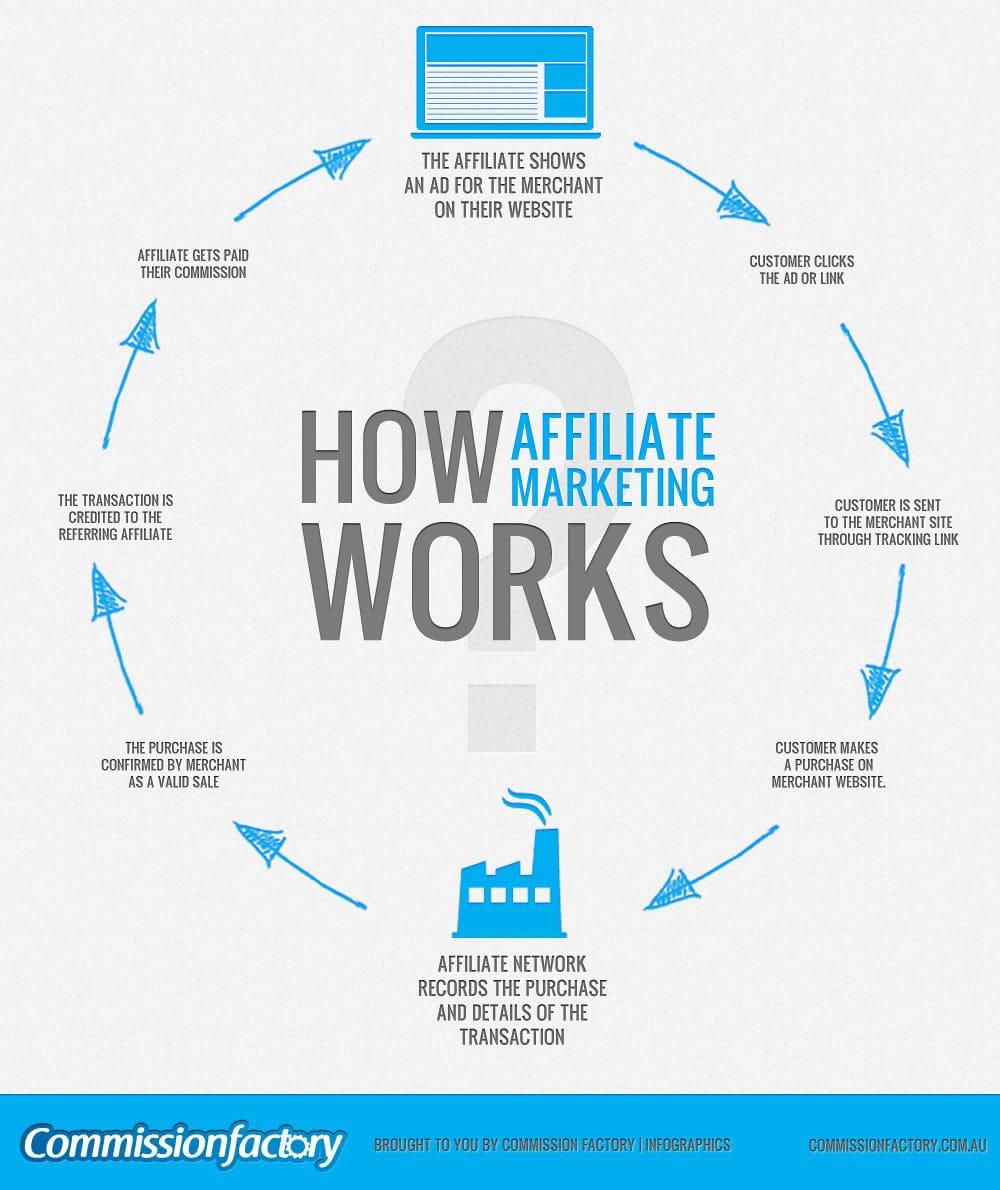
Leveraging Affiliate Marketing: A Win-Win for Businesses and Influencers
In today’s digital landscape, the synergy between businesses and influencers via affiliate marketing is unparalleled. This collaborative approach not only enhances brand visibility but also creates a compelling revenue stream for both parties. By leveraging affiliate marketing, businesses can tap into the influencer’s established audience, fostering trust and driving conversions effortlessly.
For businesses, the advantages are clear:
- Cost-Effective Advertising: Affiliate marketing operates on a performance-based model. Brands only pay for actual sales generated through affiliates, reducing the risk of investing in ineffective campaigns.
- Enhanced Reach: Influencers possess dedicated followers who trust their recommendations. This can lead to higher engagement rates and a more targeted audience, translating to increased sales.
- SEO Benefits: Quality backlinks from influencer blogs and social media posts can enhance a business’s search engine ranking, driving organic traffic.
On the flip side, influencers also stand to gain significantly:
- Diverse Revenue Streams: By partnering with various brands, influencers can diversify their income, reducing dependency on sponsorships and ad revenue alone.
- Authentic Content Creation: Affiliates can share genuine experiences with products, making their promotions more relatable and trustworthy.
- Community Engagement: Promoting products that resonate with their audience fosters a sense of community, driving interaction and loyalty.
Moreover, the collaboration can be crafted to maintain authenticity, ensuring that the influencer’s voice remains genuine. This balance not only nurtures the influencer’s credibility but also reinforces the brand’s reputation. Consider creating an affiliate program that aligns with your brand values and gives influencers the creative freedom to express their unique stories.
When executed strategically, affiliate marketing can transform the dynamics of eCommerce, establishing a mutually beneficial ecosystem where both businesses and influencers thrive. The future belongs to those who embrace this innovative marketing approach, paving the way for sustained growth and success.
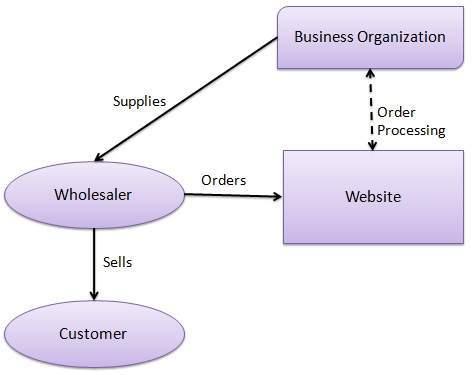
Choosing the Right Model for Your Vision: Tailoring Your Approach
When embarking on your eCommerce journey, selecting the right model is crucial for aligning your business vision with your operational strategies. Each model offers unique advantages and challenges, allowing you to tailor your approach to best suit your brand, target audience, and market demands. Here are some popular eCommerce business models to consider:
- B2C (Business to Consumer): This is the most common model where businesses sell directly to consumers. It’s ideal for brands focusing on retail, offering a vast range of products online.
- B2B (Business to Business): If you’re targeting other businesses, this model allows you to sell in bulk and establish long-term partnerships, often with discount pricing structures.
- C2C (Consumer to Consumer): Leveraging platforms that allow individuals to sell to each other is a great way to harness the power of community and peer-to-peer transactions.
- C2B (Consumer to Business): This emerging model flips the traditional sales dynamic, allowing consumers to provide goods or services to businesses, perfect for freelancers and influencers.
- Subscription model: Create a loyal customer base by offering products or services on a recurring basis, providing convenience and consistent revenue.
- Marketplace model: Consider building or utilizing a marketplace where multiple sellers can list their products, expanding your reach without the overhead of inventory management.
- On-demand model: Tailor your offerings to meet immediate consumer needs, allowing for customizable products or services and enhancing customer satisfaction.
Choosing the right model requires deep reflection on your business goals and the specific needs of your target market. It’s essential to analyze your competition, understand consumer behavior, and assess the scalability of your chosen model. Each business is unique, and what works for one may not necessarily be viable for another.
To aid in your decision-making process, consider making a simple comparison table that outlines the strengths and weaknesses of each model. This will help you visualize the best fit for your vision:
| Model Type | Strengths | Weaknesses |
|---|---|---|
| B2C | Wide audience reach, brand recognition | High competition, customer acquisition costs |
| B2B | Long-term contracts, bulk sales | Long sales cycles, need for strong relationships |
| C2C | Low overhead, community engagement | Quality control challenges, platform dependency |
| C2B | Unique value propositions, flexibility | Market volatility, payment unpredictability |
Ultimately, the right model can empower you to build a thriving eCommerce business that resonates with your customers and elevates your brand. Take the time to explore each option, and don’t hesitate to pivot your strategy as market trends evolve. Your vision deserves a model that not only supports it but enhances it.
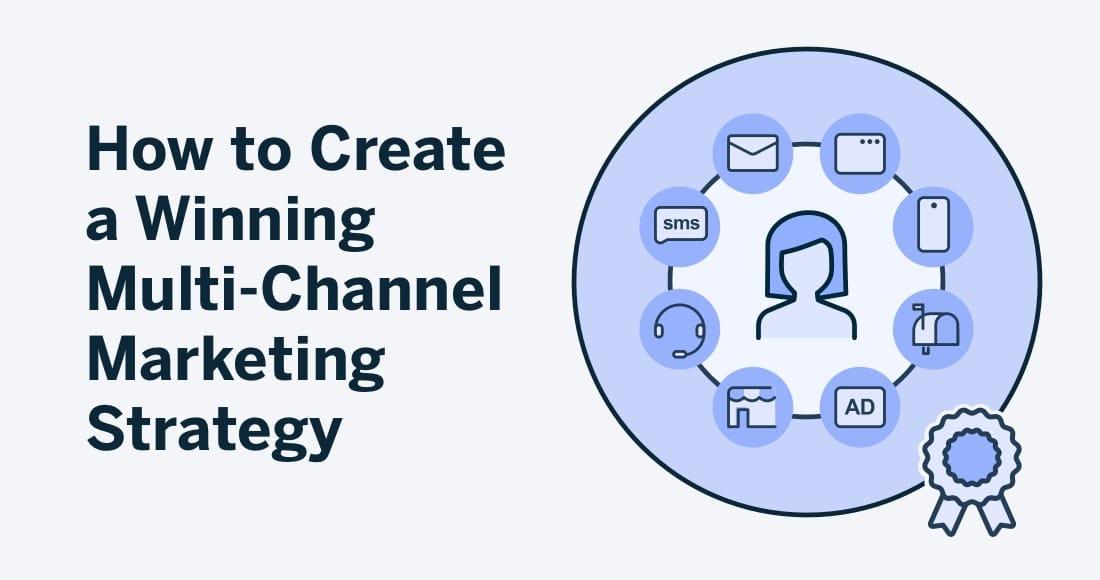
Adopting a Multi-Channel Strategy: Expanding Your Reach Effectively
In today’s competitive eCommerce landscape, relying on a single sales channel can limit your growth potential. Embracing a multi-channel strategy allows businesses to connect with customers where they are most active, whether that’s on social media, marketplaces, or through their own websites. This approach maximizes visibility and increases opportunities for conversion.
Implementing a multi-channel strategy involves:
- Identifying Your Target Audience: Understand where your customers spend their time online. Are they browsing on Instagram, shopping on Amazon, or visiting your website directly?
- Diversifying Sales Platforms: Explore various marketplaces and platforms, such as eBay, Etsy, and Shopify. Each platform attracts different demographics and can drive unique traffic to your offerings.
- Leveraging Social Media: Utilize social channels not just for branding but for direct sales. Platforms like Facebook and Instagram now offer integrated shopping features that streamline the purchasing process.
Moreover, it’s essential to ensure brand consistency across all channels. Customers should experience a seamless journey, from product discovery to checkout. Here’s how to maintain that consistency:
- Unified Branding: Use the same logos, color schemes, and messaging across all platforms to create a cohesive brand image.
- Coherent Customer Experience: Ensure customer service and return policies are uniform across channels, making it easier for customers to engage with your brand.
- Integrated Inventory Management: Use tools that sync your inventory across all channels to avoid overselling or stockouts.
To help visualize the effectiveness of a multi-channel approach, consider the following table outlining the potential reach of different channels:
| Channel | Estimated Reach | Benefits |
|---|---|---|
| Website | High | Full control over design and customer experience |
| Social Media | Very High | Direct engagement and brand building |
| Marketplaces | High | Access to established customer bases |
| Email Marketing | Moderate | Targeted communication and promotions |
Ultimately, adopting a multi-channel strategy not only expands your reach but also enhances customer loyalty. By meeting your audience in their preferred spaces and providing a consistent and engaging experience, you set the stage for sustainable growth in your eCommerce venture.
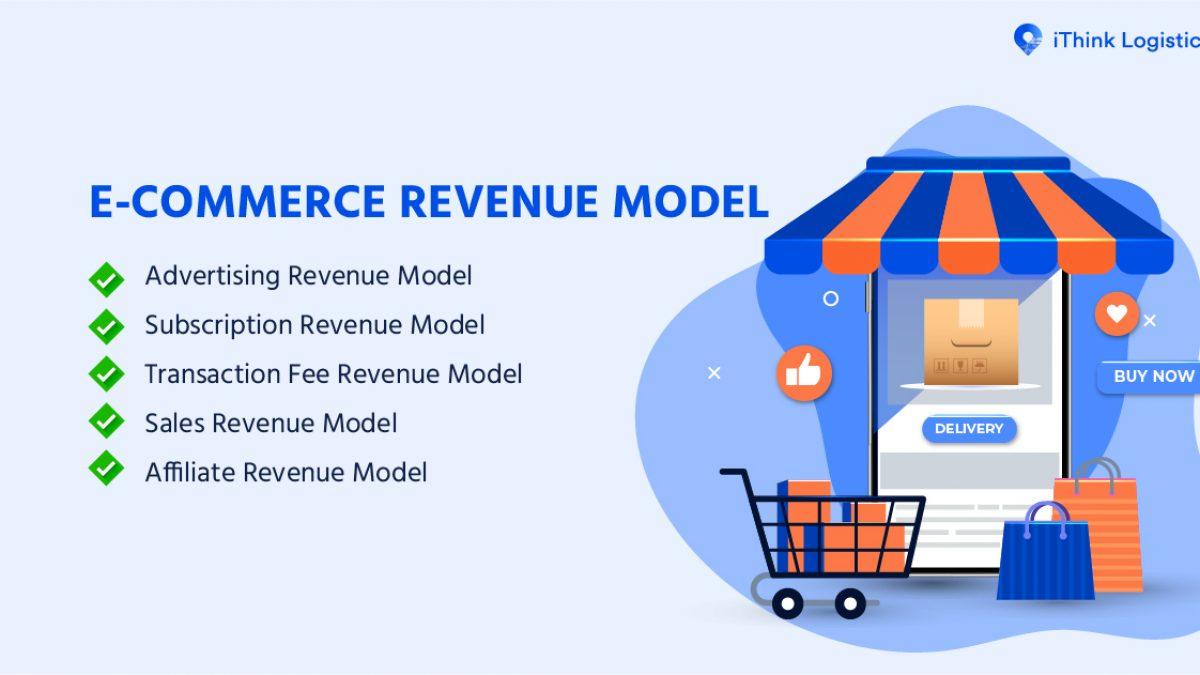
Future Trends in eCommerce Business Models: What to Watch For
As we look to the horizon of eCommerce, several transformative trends are shaping the future of business models in this digital marketplace. To stay competitive, businesses must adapt and innovate, embracing these trends that promise to redefine how products are sold and marketed.
Sustainability and Ethical Consumption are becoming key drivers in consumer decision-making. Businesses that adopt eco-friendly practices and transparency in their supply chains are witnessing increased loyalty and engagement. Brands should explore:
- Implementing sustainable sourcing
- Offering biodegradable packaging
- Promoting fair trade and ethical labor practices
Furthermore, the rise of Subscription-Based Models continues to gain traction. This model not only provides steady revenue but also fosters a deeper connection with consumers. Companies should consider:
- Personalized subscription boxes
- Exclusive memberships with added benefits
- Flexible pricing tiers to cater to different consumer needs
Social Commerce is also on the rise, leveraging social media platforms as direct sales channels. Integrating shopping features within platforms like Instagram and TikTok allows for seamless consumer experiences. Brands must focus on:
- Creating engaging, shoppable content
- Utilizing influencers to drive traffic
- Offering limited-time promotions to create urgency
Moreover, the Direct-to-Consumer (DTC) approach is reshaping how brands connect with their audience. By eliminating intermediaries, companies can enhance customer relationships and tailor marketing strategies. To capitalize on this trend, businesses should:
- Build strong, direct lines of communication with customers
- Leverage data analytics for personalized experiences
- Focus on building a compelling brand narrative
| Trend | Opportunity |
|---|---|
| Sustainability | Increase consumer loyalty |
| Subscription Models | Steady revenue stream |
| Social Commerce | Seamless shopping experience |
| Direct-to-Consumer | Enhanced customer connections |
In addition, the integration of Artificial Intelligence (AI) and Augmented Reality (AR) technologies is changing how consumers interact with products online. From virtual try-ons to personalized shopping assistants, these innovations are setting new standards for customer service. Businesses should aim to:
- Incorporate AI for better personalization
- Utilize AR for interactive product experiences
- Leverage chatbots for 24/7 customer support
as we move forward, the importance of Omnichannel Strategies cannot be overstated. A seamless experience across various platforms—whether online or in-store—will become crucial for retaining customers. Companies should strive for:
- Consistent branding across channels
- Integrated inventory management systems
- Easy transitions between online and offline shopping
Taking Action: Steps to Launch Your Own eCommerce Business Model
Launching your own eCommerce business model is an exciting journey that requires careful planning and strategic action. Here’s a roadmap to help you take those crucial first steps toward success:
- Identify Your Niche: Start by researching potential markets. Look for gaps where customer needs are unmet. Consider your passions, skills, and trends to find a niche that excites you.
- Conduct Market Research: Analyze competitors and understand your target audience. Tools like surveys, focus groups, and social media insights can provide valuable data.
- Choose Your Business Model: Whether you want to sell products directly, dropship, or offer digital goods, selecting the right business model is essential. Each model has its own advantages and challenges.
- Build a Brand: Create a compelling brand identity that resonates with your audience. This includes your business name, logo, and overall aesthetic. Strong branding enhances recognition and loyalty.
- Set Up Your Online Store: Choose an eCommerce platform that suits your needs, such as Shopify, WooCommerce, or BigCommerce. Customize your store to reflect your brand, ensuring it’s user-friendly and visually appealing.
- Develop a Marketing Strategy: Plan how to attract customers. Consider a mix of SEO, social media marketing, email campaigns, and paid ads to build awareness and drive traffic to your store.
- Launch and Analyze: Once everything is in place, launch your store! Monitor performance metrics like traffic, conversion rates, and customer feedback to refine your approach continuously.
| Step | Description |
|---|---|
| Identify Niche | Find a market with unmet customer needs. |
| Market Research | Understand competitors and target audience. |
| Choose Model | Select the business model that fits your goals. |
| Build Brand | Create a memorable brand identity. |
| Set Up Store | Choose and customize your eCommerce platform. |
| Marketing Strategy | Develop a comprehensive plan to attract customers. |
| Launch & Analyze | Monitor metrics and adapt strategies post-launch. |
Embrace the process, stay adaptable, and remember that each step brings you closer to your eCommerce dream. With perseverance and a clear action plan, your business can thrive in the digital marketplace. Now is the time to take that leap and make your entrepreneurial aspirations a reality!
Frequently Asked Questions (FAQ)
Q&A: What Is an eCommerce Business Model? (8+ Common Types)
Q1: What exactly is an eCommerce business model?
A1: An eCommerce business model defines how a company sells goods or services online. It outlines the strategies, revenue streams, and processes that drive its online sales. Understanding different eCommerce models can empower aspiring entrepreneurs to find the perfect fit for their vision, enabling them to tap into the lucrative digital marketplace.
Q2: Why should someone consider starting an eCommerce business?
A2: The digital age has revolutionized the way we shop, making eCommerce one of the fastest-growing sectors worldwide. By starting an eCommerce business, you can reach a global audience, enjoy low overhead costs, and operate without the constraints of traditional brick-and-mortar establishments. Imagine turning your passion into a profitable venture while enjoying the freedom to work from anywhere!
Q3: What are the eight common types of eCommerce business models?
A3: Understanding these models can help you make informed decisions. Here are eight common types:
- B2C (Business-to-Consumer): Selling products directly to consumers. It’s the most recognized model, seen in brands like Amazon and Zara.
- B2B (Business-to-Business): Involves transactions between businesses. Think of companies that sell wholesale products to retailers.
- C2C (Consumer-to-Consumer): Platforms like eBay and Etsy allow consumers to sell directly to one another, creating a vibrant marketplace.
- C2B (Consumer-to-Business): Individuals sell products or services to businesses; a prime example is freelance platforms where experts offer their skills.
- D2C (Direct-to-Consumer): Brands sell directly to consumers, eliminating middlemen for a more personalized shopping experience—think Warby Parker and Dollar Shave Club.
- Subscription-Based: Companies like Netflix and Dollar Shave Club charge a recurring fee for their services or products, ensuring a steady stream of revenue.
- Marketplaces: Platforms like Amazon and eBay allow various sellers to list products, creating a one-stop-shop for consumers.
- Dropshipping: This model allows entrepreneurs to sell products without holding inventory. When a sale is made, the product is shipped directly from the supplier to the customer.
Q4: How can I choose the right eCommerce model for my business?
A4: Choosing the right model depends on your products, target audience, and business goals. Reflect on your strengths and market needs. Consider conducting market research to identify gaps you can fill. Remember, the right model can set you on a path to success, aligning with your passion while meeting consumer demands.
Q5: What challenges might I face when starting an eCommerce business?
A5: While an eCommerce venture can be exhilarating, it’s essential to recognize potential challenges, such as fierce competition, digital marketing complexities, and logistical hurdles. However, every challenge is an opportunity for growth. With perseverance, determination, and a willingness to adapt, you can turn obstacles into stepping stones towards success.
Q6: How can I ensure my eCommerce business stands out from the competition?
A6: To stand out, focus on delivering exceptional customer experiences. Invest in user-friendly website design, provide top-notch customer service, and utilize targeted marketing strategies. Building a unique brand identity and fostering customer loyalty through authentic engagement and value will set you apart in a crowded marketplace.
Q7: Is it possible to scale an eCommerce business, and how?
A7: Absolutely! The beauty of eCommerce lies in its scalability. As your customer base grows, you can expand product lines, leverage automation tools for efficiency, and explore new markets. Utilize data analytics to track performance and optimize your strategies, ensuring you’re always one step ahead in meeting consumer demands.
Q8: How do I start my journey in eCommerce?
A8: Begin by researching your niche and identifying your target audience. Develop a solid business plan outlining your vision, goals, and marketing strategies. Choose the right eCommerce platform that aligns with your needs, and don’t hesitate to seek mentorship or resources to guide you. Remember, every great journey begins with a single step. Embrace the adventure that lies ahead!
Embarking on an eCommerce journey can be one of the most rewarding decisions you make. With the right knowledge and mindset, you can turn your dreams into reality, impact lives, and thrive in the digital marketplace. Go ahead—take the leap!
Wrapping Up
understanding the various eCommerce business models is not just an academic exercise—it’s a crucial step toward unlocking your entrepreneurial potential. Each model offers unique opportunities and challenges, allowing you to align your business vision with the right strategy. Whether you’re drawn to the direct-to-consumer approach, the affiliate marketing landscape, or the subscription box phenomenon, there’s a pathway tailored for you.
As you embark on this exciting journey, remember that success in eCommerce is not solely about the model you choose, but also about your passion, commitment, and willingness to adapt. Innovation and resilience are your best allies in this fast-paced digital landscape.
Take the insights gained from this exploration and let them ignite your ambition. The world of eCommerce is vast and full of possibilities. Don’t just dream about your ideal business; take the first step toward making it a reality. With the right knowledge and a spirited approach, you can turn your vision into a flourishing eCommerce venture. So, go ahead—embrace the challenge, leverage these models, and carve your niche in the digital marketplace. Your success story starts now!


